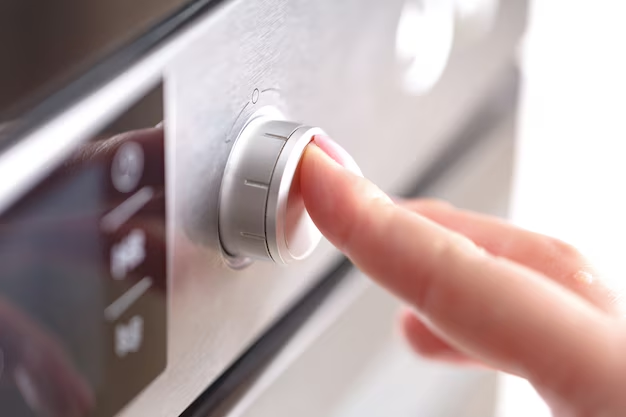Finding the Perfect Temperature for Your Freezer and Refrigerator
Keeping your food fresh and safe is a top priority for any household. The temperature setting of your freezer and refrigerator plays a crucial role in this. With varying appliance models and differing opinions on ideal temperature settings, it’s easy to feel overwhelmed. However, choosing the right temperature isn’t just about preserving food; it’s also about balancing energy efficiency and appliance longevity. Let’s dive into discovering how to set your freezer and refrigerator temperatures for optimal performance, keeping in mind safety, efficiency, and food quality.
Why Temperature Settings Matter 🧊
Refrigerators and freezers are designed to maintain a consistent environment that slows down the growth of bacteria and molds, providing a safe space for food storage. Setting the proper temperature:
- Prevents Spoilage: Cold temperatures help maintain the freshness and nutritional value of food.
- Promotes Safety: Reduces the risk of foodborne illnesses by keeping harmful bacteria at bay.
- Improves Efficiency: A correct temperature setting ensures your appliance runs efficiently without excessive energy consumption.
Setting your appliances to the right temperature not only influences food preservation but also impacts energy consumption and efficiency.
What Are the Recommended Temperature Settings?
Refrigerator Temperature 🍏
The universally recommended temperature for refrigerators is around 37°F (3°C). This setting is considered optimal because it’s cold enough to slow bacteria growth but not so cold that it freezes your fresh produce and dairy products.
Benefits of 37°F:
- Preserves Freshness: At this temperature, fruits, vegetables, and dairy products remain fresh for longer without freezing.
- Maintains Quality: Ensures that meats and perishables are kept at a level where bacteria proliferation is minimal.
Freezer Temperature ❄️
For freezers, the recommended setting is 0°F (-18°C). This temperature keeps stored foods frozen, ensuring they remain safe from microbial growth.
Benefits of 0°F:
- Long-Term Storage: Allows you to store meats and other perishables for extended periods.
- Nutrient Preservation: Proper freezing locks in nutrients, keeping food safe and healthy for consumption over time.
Practical Tips for Temperature Maintenance
Monitor and Adjust Regularly
- Use a Thermometer: Keep a separate thermometer in your fridge and freezer to monitor their accuracy. This helps ensure they maintain the desired temperatures.
- Adjust Seasonally: Ambient temperatures can affect appliance efficiency. Consider minor adjustments during seasonal changes to maintain consistent internal conditions.
Efficient Storage Practices
- Don't Overfill: Whether it’s the fridge or freezer, don't overcrowd. Air circulation is crucial for maintaining uniform temperatures throughout the appliance.
- Organize Strategically: Keep commonly used items towards the front and organize food to allow air circulation, improving efficiency.
Additional Considerations 💡
Energy Efficiency and Cost Savings
Efficient temperature management can directly impact your energy bill. Here’s how to optimize it:
- Defrost Regularly: If your appliance doesn’t have an auto-defrost setting, make sure to periodically defrost your freezer.
- Check Seals: Damaged door seals can lead to fluctuating temperatures and higher energy costs.
Food Safety and Longevity
- Consider Climate: In hotter climates, appliances might need to work harder to maintain temperatures, especially if located near heat sources like ovens or sunlight exposure.
- Regular Maintenance: Regularly inspect and clean condenser coils and fans to improve efficiency and longevity.
Common Myths and Misconceptions
Myth 1: Colder is Always Better
A common misconception is that setting the fridge or freezer to the coldest setting ensures better food preservation. However, excessively cold temperatures can cause produce to freeze, alter the texture of some foods, and waste energy.
Myth 2: Frequent Opening Doesn’t Impact Temperature
Every time you open the refrigerator or freezer, warm air enters, causing the compressor to work harder to bring the temperature back to the set level. Minimize door openings to keep internal temperatures stable.
Here’s a quick-reference summary to keep handy:
| Appliance | Recommended Temperature | Key Benefits |
|---|---|---|
| Refrigerator | 37°F (3°C) | Maintains freshness, prevents spoilage of perishable items |
| Freezer | 0°F (-18°C) | Safe long-term storage, locks in nutrients |
Quick Tips for Optimal Appliance Usage 🌟
- 📏 Measure Regularly: Use a reliable thermometer to measure and confirm temperatures.
- 🔄 Rotate Foods: Implement the first-in, first-out (FIFO) method to use foods efficiently.
- 🌬️ Improve Airflow: Organize shelves to allow maximum air circulation.
- 🚪 Door Maintenance: Ensure doors are fully closed and seals are intact.
Crafting a Cooler Conclusion
Understanding the right temperature to set your freezer and refrigerator can make a significant difference in food safety, energy efficiency, and overall appliance performance. By adhering to recommended settings, regularly monitoring temperatures, and maintaining your appliances, you’ll ensure food stays fresh and safe longer while reducing energy consumption. A little diligence goes a long way in maintaining the heart of your kitchen — your refrigerator and freezer! So, set those temperatures right, and enjoy the benefits of sustained food quality and efficiency.
